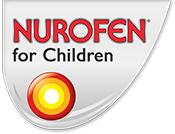Like a Hole in the Head

"I've got an awful headache." This might sound like a familiar phrase, perhaps, but at least in this day and age we have a good knowledge of how to get rid of a headache quickly and simply.
How headaches used to be treated
When the mechanisms and causes of headaches were poorly understood and the question - What is a headache? - couldn't be answered accurately, there were some rather extreme forms of treatment being practiced and recommended.
Perhaps the most extreme way of trying to relieve the perceived pressure on the brain was believed to have begun as early as the 8th century BC. This was known as ‘trepanning’ and involved attempting to relieve pressure by putting a hole in the skull. Amazingly, it was still being carried out until the 1600s.
Other somewhat less invasive but still rather unusual headache treatments throughout history have involved:
- Tying a dead mole to your head: Ali ibn Isa al-Kahhal, the Islamic physician known in Europe as ‘Jesu Occulist’ (Jesus Eye Doctor) was so well regarded, that even some of his more ‘out there’ ideas, such as the application of a dead mole to the head to relieve pain, were taken seriously.
- Burning your head: The Greek physician Arateus of Cappadocia is often credited with the discovery of the migraine as a unique condition. Unfortunately, his ability for classification didn’t manifest as a talent for prescription, as he recommended burning the skin of the head down to the bone – something that even he recognised as a ‘hazardous treatment’ in his writings.
- Trepanning: Making holes in the skull to relieve pain is one of the oldest surgical procedures performed, with skulls from as early as 6500BC having been found with trepanation holes that show signs of healing – meaning the patient survived. The procedure is considered pseudo-science and is not recognised as a legitimate medical treatment, although there are still some who argue its benefits, including British aristocrat Amanda Feilding, who was shown performing trepanation on herself with a dentist’s drill in the 1970 short-film Heartbeat in the Brain.
- Take a warm bath: Maimonides, a 12th century physician and astronomer came up with this method for ‘drawing out the vapours that bring aches to one's head’. Whilst his reasoning may have been faulty, the treatment would likely have seen positive results as stress levels were reduced, the reason that many of us choose to practice this method when we have a headache, even today.
Mankind had to wait quite a while for something with more scientific basis, and in the quest to find the best methods to stop headaches, we've also been put through ‘bloodletting’ and ‘cupping and blistering the skin’, before finally getting to analgesia.
The analgesic era
Gone are the holes in the head in today’s times, to be replaced with safer, proven methods that employ slightly more acceptable and convenient routes of administration, orally administered tablets, rub-in gels and intravenous (directly into the blood system) formulations. Because pain and headaches are now better understood, they're treated in more refined and targeted ways. Generally speaking, we have two main categories of painkillers:
- Opioid
- Non-opioid analgesics
A subgroup of Non-opioid analgesics, called NSAIDs (Non-Steroidal Anti Inflammatory Drugs - such as Ibuprofen and Paracetamol) can both be effective for common problems like tension type headaches. Whereas severe pain, such as that experienced as a result of a more serious accident or condition, may require opioid analgesics.
How do analgesics work?
Opioid analgesics
Morphine is regarded as one of the strongest opioid analgesics, while codeine is considered a weaker opioid. They work by having an effect on pain signaling to the brain, by decreasing the perception of pain and reaction to pain, while increasing pain tolerance. Because these are significantly stronger, they can cause drowsiness and confusion, so it can be difficult to take advantage of the pain relief properties at work.
Non-Opiod Analgesics
We've certainly come a long way in order to have discovered the effects of many different chemicals within our bodies – prostaglandins, for instance. These are chemicals that can be released when you are injured or sick, and they make nearby nerves sensitive to pain, helping your body realise that something is wrong. However, a non-opioid analgesic such as Ibuprofen (the active ingredient in Nurofen products) can block the production of prostaglandins. This type of analgesic gets to work fast, targeting the source of the pain, helping to provide relief.
Today, treating a headache needn't be such a headache. If you suffer tension type headaches, for example, just reach for a good treatment plan instead of holes and the moles.
Information sources for this article:
http://mentalfloss.com/article/52689/5-bizarre-and-scary-historical-headache-cures
http://brain.oxfordjournals.org/content/133/8/2489
http://io9.com/how-drugs-work-to-help-you-ease-the-pain-1452216695
http://www.nurofen.co.uk/health-wellbeing/articles/how-does-nurofen-target-the-source-of-pain/
